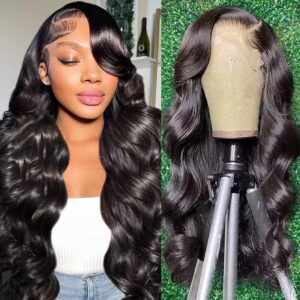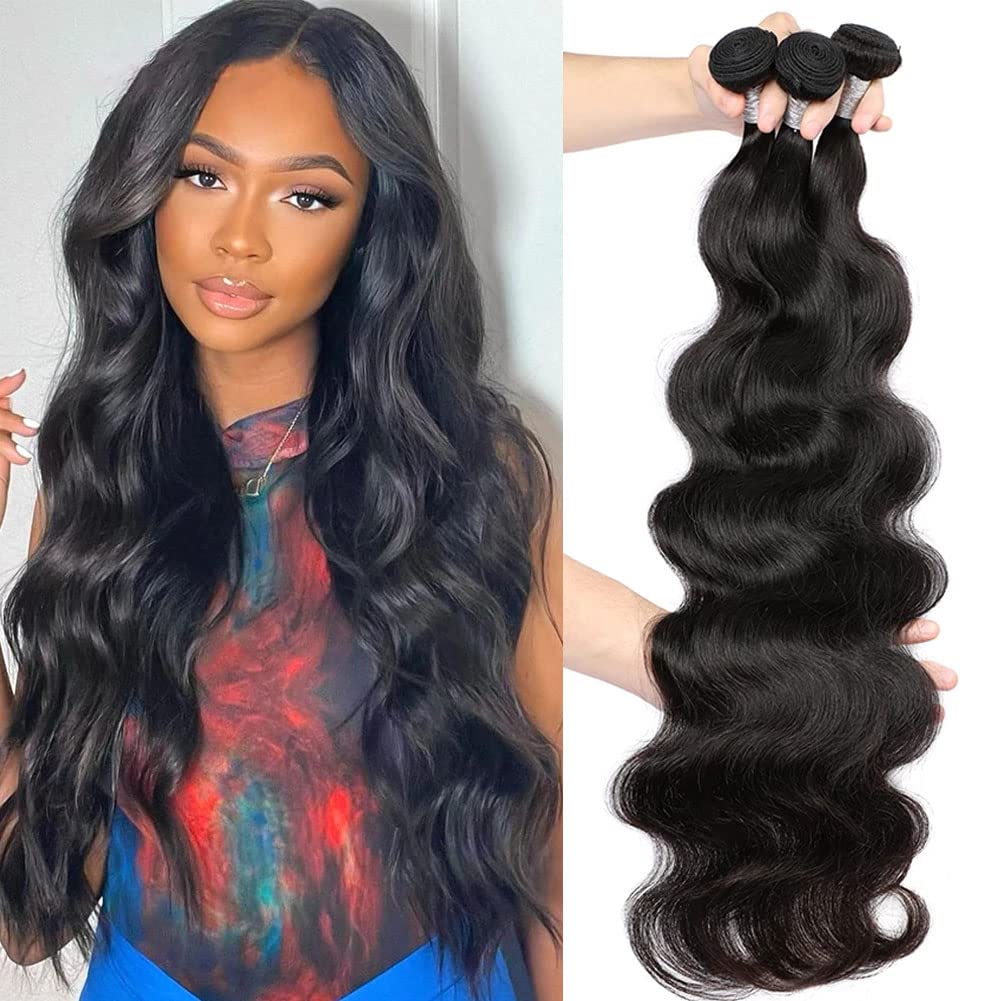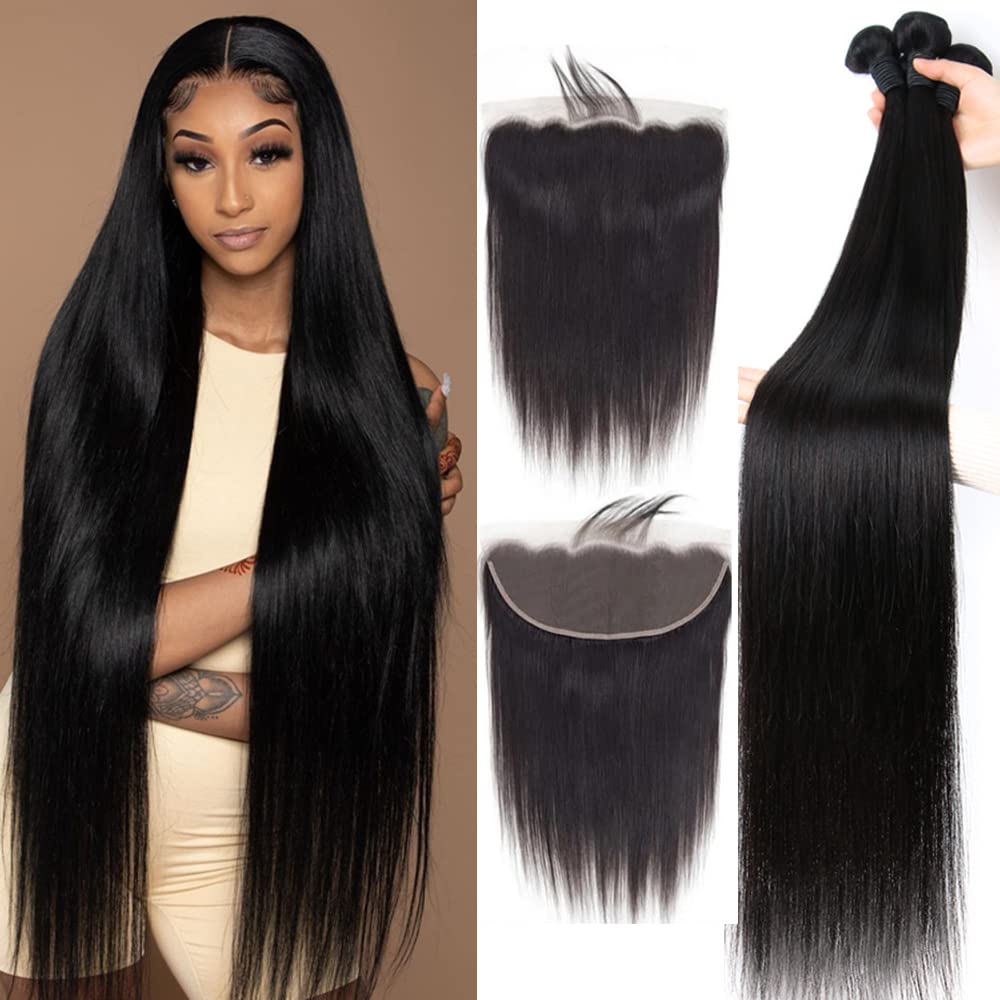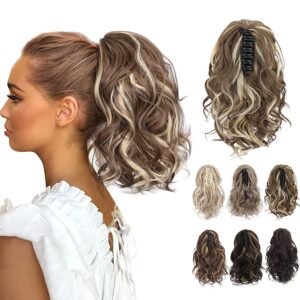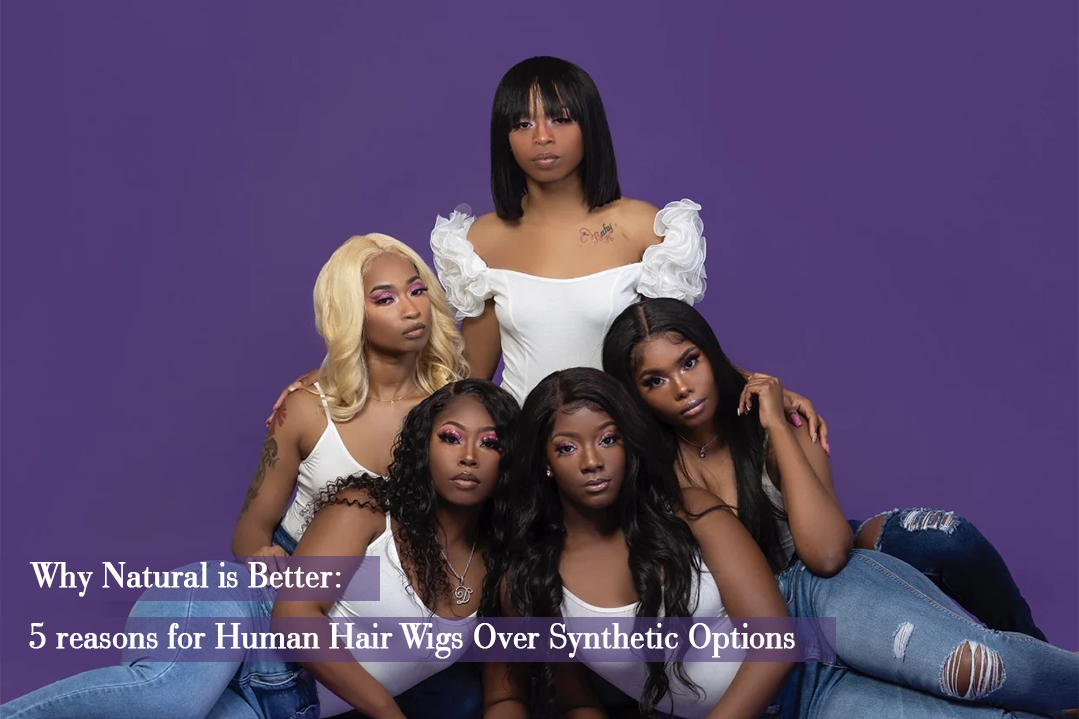When it comes to choosing a wig, the decision often boils down to personal preference, budget, and lifestyle. While synthetic wigs have made great strides in replicating the look and feel of real hair, there is something undeniably special about human hair wigs. In this article, we will explore five compelling reasons why human hair wigs are often preferred over their synthetic counterparts.
1. Realistic Appearance and Texture
The primary difference between human hair wigs and synthetic wigs in terms of realistic appearance and texture lies in the way the hair looks and feels.
Human Hair Wigs
Natural Look
Human hair wigs are made from real, unprocessed human hair. This natural origin gives them an incredibly realistic appearance. The hair in these wigs mimics the texture, shine, and movement of natural hair.
Texture Variability
Just like natural hair, human hair wigs can have a range of textures, including straight, wavy, or curly. This makes it easier to find a wig that closely matches your own hair texture.
Scalp Exposure
Human hair wigs can be customized to create a natural-looking scalp, including a realistic hairline and parting. This adds to the overall authenticity of the wig.
Blending
Human hair wigs seamlessly blend with your natural hair, making it challenging for others to discern that you’re wearing a wig.

Synthetic Wigs
Fiber Composition
Synthetic wigs are made from synthetic fibers, typically polyester, acrylic, or a blend of synthetic materials. While modern synthetic wigs have made significant improvements, they still lack the natural texture and shine of human hair.
Limited Texture Options
Synthetic wigs often come with preset styles and textures. While you can find a variety of synthetic wig styles, you have less flexibility to change the texture of the hair.
Shine
Synthetic wigs can sometimes have an unnatural shine that makes them appear less realistic compared to human hair wigs.
Heat Resistance
Synthetic wigs are not heat-resistant, meaning you can’t use heated styling tools like curling irons or straighteners on them without causing damage.
Human hair wigs excel in providing a realistic appearance and texture due to their natural origin and the ability to mimic the look and feel of real hair. Synthetic wigs, while more affordable and easier to maintain, often have a less authentic texture and appearance, primarily because of the synthetic materials used to create them. The choice between human hair and synthetic wigs depends on your priorities, budget, and specific needs. If you prioritize a natural look and feel, human hair wigs are the superior choice.
2. Versatility in Styling
The difference in versatility in styling between human hair wigs and synthetic wigs is significant and stems from the fundamental characteristics of the two types of wigs.
Human Hair Wigs
Styling Flexibility
Human hair wigs offer a high degree of styling versatility. Just like your natural hair, you can curl, straighten, and style them as desired. This means you can achieve a wide range of looks, from sleek and straight to wavy or curly, and even experiment with various updos and braided styles.
Heat Resistance
Human hair wigs are heat-resistant, which means you can use heated styling tools like curling irons, straighteners, and hairdryers to achieve your desired look. You have complete control over styling, making it easier to change your hairstyle to suit your mood or occasion.
Cut and Color
Human hair wigs can be cut, colored, and customized by professionals to achieve the exact style you desire. This level of customization allows you to adapt your wig to your unique preferences and even match your existing hairstyle.
Longevity of Style
Styles in human hair wigs tend to last longer and hold their shape, even in adverse weather conditions, which can be particularly advantageous for those who need their wig to maintain a specific look throughout the day.

Synthetic Wigs
Set Styles
Synthetic wigs come with pre-set styles and textures that are typically heat-sealed into the fibers during manufacturing. These styles are more resistant to change and are meant to remain consistent over time.
Heat Sensitivity
Synthetic wig fibers are not heat-resistant. Attempting to use heated styling tools on synthetic wigs can damage and melt the fibers, altering the wig’s appearance permanently.
Limited Restyling
While you can manipulate the style of synthetic wigs to some extent, it’s more challenging to make significant alterations. Any changes to the wig’s style are temporary and may not hold well.
Human hair wigs offer superior styling versatility due to their ability to withstand heat and be customized to your liking. You can change the texture, style, and color of human hair wigs to suit your preferences and adapt to various occasions. On the other hand, synthetic wigs have preset styles that are less flexible and not heat-resistant, making them less versatile for restyling and customizing. The choice between the two types of wigs will depend on how much flexibility and control you want over your wig’s style. If you value the ability to change your look frequently, human hair wigs are the better choice.
3. Durability and Longevity
Human Hair Wigs
Durability
Human hair wigs are generally more durable and long-lasting than synthetic wigs. They can withstand daily wear and are less prone to damage from everyday activities and exposure to the elements.
Longevity
With proper care and maintenance, high-quality human hair wigs can last for several years. Some human hair wigs can remain in good condition for up to five years or more. This longevity makes them a worthwhile long-term investment.
Resilience
Human hair wigs can maintain their original condition, texture, and appearance even after repeated styling, washing, and exposure to environmental factors. They are less likely to lose their luster or become tangled or frizzy.
Restoration
Human hair wigs can often be rejuvenated and restored to their original condition through professional hair treatments and services. This can extend their lifespan and maintain their quality.
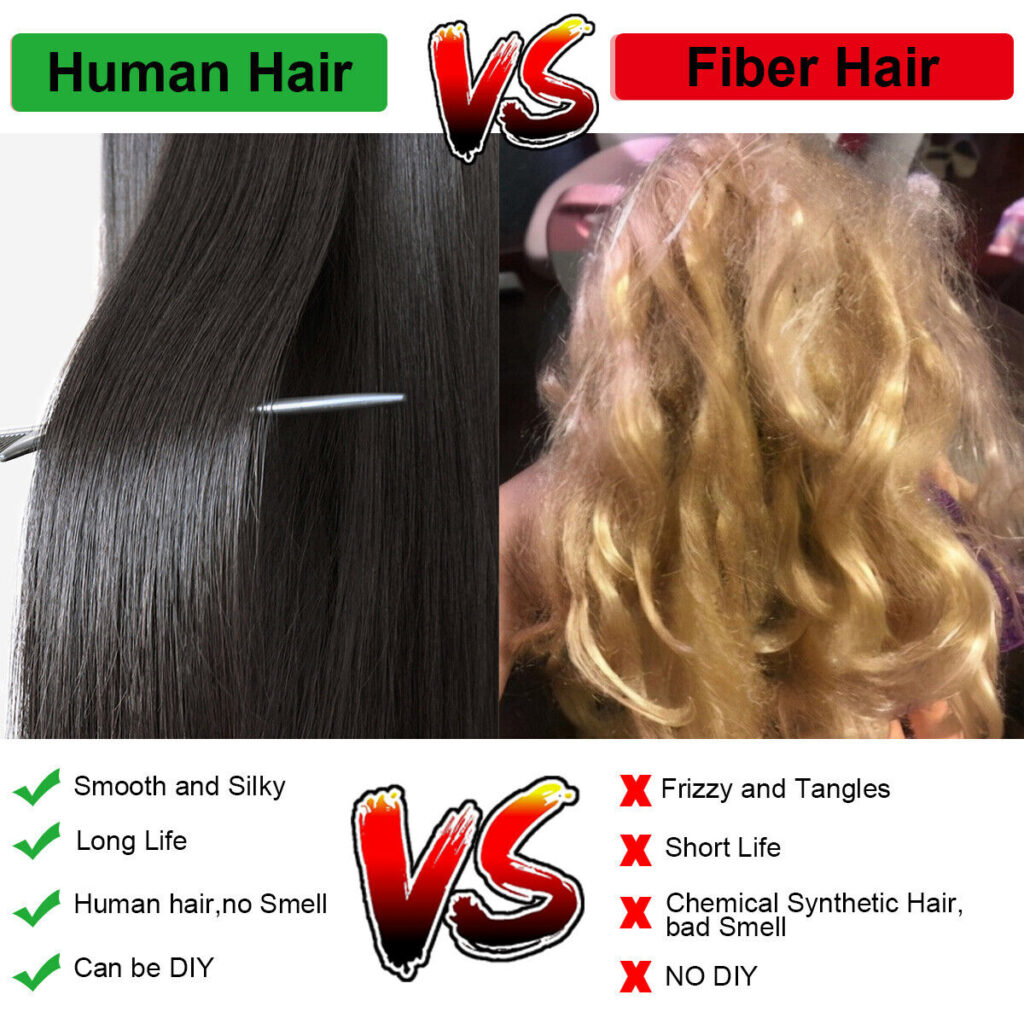
Synthetic Wigs
Durability
Synthetic wigs are generally less durable than human hair wigs. The synthetic fibers are more susceptible to wear and tear, and the wigs may show signs of frizzing, matting, or tangling more quickly.
Longevity
The average lifespan of a synthetic wig is typically shorter, ranging from a few months to a year, depending on how frequently the wig is worn and how well it’s maintained.
Maintenance Challenges
Synthetic wigs require specialized care and should be washed and styled following the manufacturer’s guidelines to maximize their lifespan. Excessive heat exposure, friction, and incorrect care can significantly reduce their longevity.
Limited Restoration
Unlike human hair wigs, synthetic wigs cannot be easily restored to their original condition. Once they start to show signs of wear and tear, there is limited potential for rejuvenation.
Human hair wigs are more durable and have a significantly longer lifespan compared to synthetic wigs. They can endure daily use and maintain their original condition with proper care and maintenance. On the other hand, synthetic wigs are generally less durable and have a shorter lifespan, making them more suitable for temporary or occasional use. The choice between the two types of wigs will depend on how long you intend to wear the wig and how much longevity you expect from your investment. If you’re looking for a wig with a more extended lifespan, human hair wigs are the preferable choice.
4. Comfort and Breathability
The difference in comfort and breathability between human hair wigs and synthetic wigs is influenced by several factors.
Human Hair Wigs
Breathability
Human hair wigs are generally more breathable than synthetic wigs. The natural hair fibers allow for better air circulation, reducing the risk of discomfort or moisture buildup on the scalp.
Lightweight
Human hair wigs tend to be lighter in weight compared to synthetic wigs. This feature makes them more comfortable for extended wear, as they place less strain on the head and neck.
Scalp-Friendly
The natural origin of human hair wigs is less likely to cause scalp irritation or itching. They are ideal for individuals with sensitive scalps.
Temperature Regulation
Human hair wigs provide better temperature regulation, ensuring that the scalp does not become overly hot or sweaty, which can be an issue with some synthetic wigs.

Synthetic Wigs
Breathability
Synthetic wigs are generally less breathable due to the nature of synthetic fibers. They do not allow as much airflow as human hair wigs, which can lead to discomfort or a sensation of warmth, especially during hot weather.
Heavier
Synthetic wigs are often heavier than human hair wigs of similar length and style. This added weight can make them less comfortable for extended wear, particularly if they are not properly secured.
Potential for Scalp Irritation
The synthetic materials used in some wigs can cause scalp irritation, especially for individuals with sensitive skin. The combination of synthetic fibers and the wig cap’s construction can contribute to friction and discomfort.
Limited Breathability
Synthetic wigs may not allow moisture to escape as effectively as human hair wigs, potentially leading to a sense of dampness and discomfort during prolonged wear.
Human hair wigs tend to provide better comfort and breathability due to their lightweight, natural composition, and superior airflow. They are less likely to cause scalp irritation and offer a more comfortable experience, especially for individuals who require extended wear. On the other hand, synthetic wigs may have some limitations in terms of comfort and breathability due to the nature of synthetic fibers, which may not allow for optimal airflow or moisture control. The choice between human hair and synthetic wigs will depend on your personal comfort preferences and the expected duration of wear. If comfort and breathability are essential considerations, human hair wigs are generally the more comfortable option.
5. Natural Hair Colors and Customization
The difference between human hair wigs and synthetic wigs in terms of natural hair colors and customization is significant and can impact your ability to achieve the desired look.
Human Hair Wigs
Natural Hair Colors
Human hair wigs offer a broader range of natural hair colors and shades. This variety includes numerous shades of black, brown, blonde, red, and gray. You can typically find a human hair wig that closely matches your existing hair color or a color you desire.
Customization Potential
Human hair wigs can be professionally colored, dyed, or customized to achieve the exact shade you want. This level of customization allows you to adapt the wig to your unique preferences and even match your existing hairstyle.
Blending with Natural Hair
Human hair wigs seamlessly blend with your natural hair, making it challenging for others to discern that you’re wearing a wig. This natural blending adds to the overall authenticity of the wig.
Rooted Colors
Some human hair wigs offer rooted colors, imitating the natural root growth of hair, which enhances the realistic appearance.
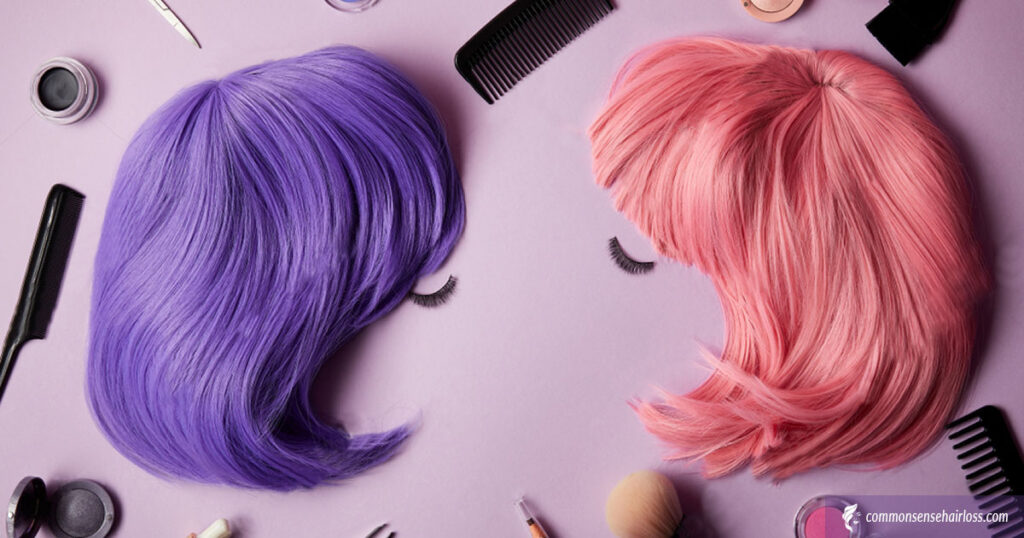
Synthetic Wigs
Limited Natural Colors
Synthetic wigs typically come in a limited range of colors and shades. While you can find common natural hair colors, there may be fewer options available compared to human hair wigs.
Challenging to Customize
Synthetic wigs are not as amenable to custom coloring or dyeing. Attempting to change the color of a synthetic wig can damage the synthetic fibers or lead to unintended results.
Risk of Color Fading
Synthetic wig colors can fade over time, especially with exposure to sunlight and other environmental factors. This may result in a less natural appearance.
Inconsistent Rooted Colors
Achieving realistic rooted colors can be more challenging with synthetic wigs, as the fibers do not have the same natural appearance as human hair.
Human hair wigs offer a broader range of natural hair colors and provide extensive customization potential. You can achieve a personalized and natural look that matches your unique preferences. In contrast, synthetic wigs come with more limited color options, and they are challenging to customize in terms of color changes. If you value the ability to match your wig precisely to your natural hair color or desire customization, human hair wigs are the preferable choice.
Conclusion
While synthetic wigs have their merits and can be a practical choice for some, human hair wigs remain the top choice for those seeking the most realistic and versatile wig option. With their realistic appearance, styling versatility, durability, comfort, and customization potential, human hair wigs provide an unparalleled experience for individuals looking to enhance their hair or explore different looks.
The decision between human hair and synthetic wigs ultimately depends on your preferences and requirements. If authenticity, styling versatility, and long-term use are your priorities, then human hair wigs are the natural choice for you. Their ability to mimic the look and feel of real hair makes them a popular option for individuals seeking the most lifelike wig experience available.

